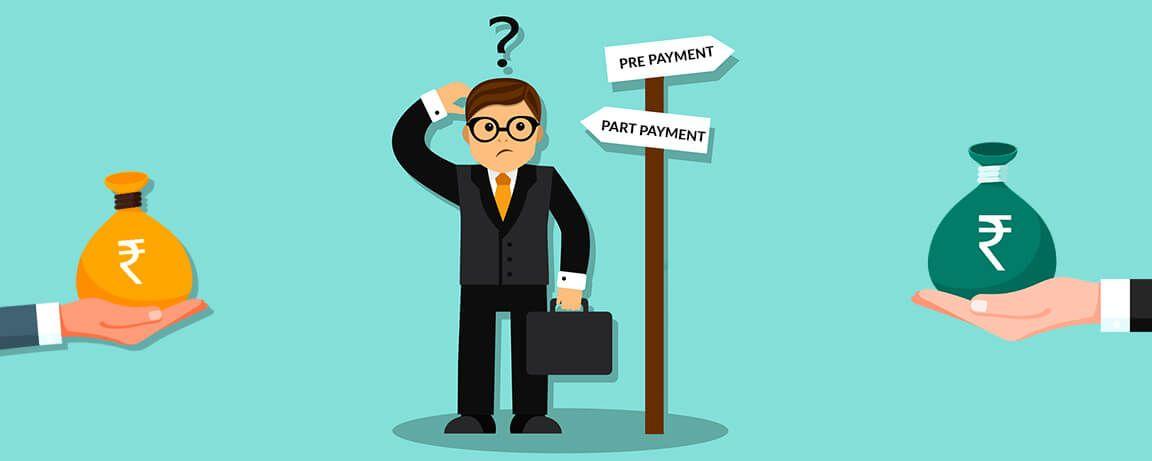Personal Loan: To Pre-Pay or Part Pay?
Having a Personal Loan can be extremely stressful for many; simply because, a part of income has to be put aside for the EMI for the given tenure. Although it is the best funding option for availing the necessary funds within a short time, especially in case of a personal emergency, yet it can be an expensive affair!
With most bank loans like Saraswat Bank Personal Loan, the repayment tenure may extend up to 5 years which makes them a significant financial commitment. In case you have the required funds available, there is an option to make part payments towards the loan or to even close the loan account completely before the tenure ends. However, the timing of the prepayment and the conditions of prepayment of the loan laid out by the bank can determine whether it is a good idea to make a prepayment or not.
What Are The Prepayment Options?
Next to Credit Cards, Personal Loan Interest Ratesare the highest among the different loan products available in the market today. This is why many customers prefer to make larger part payments towards the Personal Loan or close the account completely before the tenure. With most products like Oriental Bank of Commerce Personal Loan, two repayment options are available.
Full prepayment or foreclosure: Full prepayment is repaying the entire loan amount in one go before the stipulated repayment tenure of the loan is completed.
Part prepayment: Sometimes, the individual who holds the loan account may get access to additional funds. This will allow him or her to pay off a large portion of the loan and not the entire loan amount at once. With most banks, there is an added option of making multiple part payments towards the loan to close it faster.
Whether the individual chooses to foreclose the loan or to make part-prepayments, the result is that the loan outstanding reduces significantly. This can further reduce the burden of the EMI.
Let’s have a reality check on the advantages and disadvantages of choosing either of the prepayment option provided by your bank on Personal Loan.
Advantages and Disadvantages of Full Prepayment
Personal Loan Interest Rates are high because these loans are usually unsecured. Therefore, being able to repay the loan amount completely before the tenure ends can help you save a lot on the interest component. The full prepayment is made towards the principal amount that is borrowed as a loan.
“When” the full prepayment towards the loan is made, is a significant factor to consider. For most people, it is only possible to make the full prepayment towards the loan towards the end of the tenure. However, it is advised that a loan should only be foreclosed if this can be done at the beginning of the loan tenure. If not, the savings on the interest are not as high as the person would expect.
With most banks, a prepayment fee is charged. This is usually a portion of the loan amount. If the loan is fully repaid towards the end of the loan tenure, the fees charged could actually be higher than the interest that the person would pay towards the remaining tenure, making this a less suitable option.
Sometimes, banks may offer pre-closure deals and offers for a particular season when the charges are almost zero. This is the best time to make the full prepayment.
Advantages and Disadvantages of Part Prepayment
For those who do not wish to repay the loan fully but still want to close the loan account as early as possible, part payment options are best suited. This option can be chosen as per your convenience or when you have access to the necessary funds.
It is possible to make multiple prepayments in a year. However, there is a cap on the amount that you can pay with each part prepayment.
With most banks, a prepayment fee is charged. This can work out to be more expensive than paying interest when the person is making multiple part prepayments. It is a good idea to opt for loans like the Oriental Bank of Commerce personal loan where the prepayment charges are nil.
In some banks, the option of prepayment may not be available at all. Therefore, this is one feature that you must check before applying for a loan.
After a part payment is made, you can either reduce the future EMI or the tenure of the loan while keeping the EMI same.
Is it Better Prepay or Part-Pay a Loan?
Full prepayment should only be made towards the beginning of the loan tenure. If not, it can become a liability. However, if full payment is not financially feasible for you, go for part prepayment, as it will help you close the loan fast.
Part prepayment charges are also lower in comparison to the charges levied towards foreclosure or pre-closure of a loan.
With most banks, a full prepayment or part prepayment can only be made after a certain period after the loan is disbursed. Making a full repayment or a part prepayment is very easy. The individual will have to make the payment at the branch of the bank that the loan account is held with.
A Demand Draft or a Cheque must be issued in the name provided by the bank with the exact full prepayment or part prepayment of the loan. If the EMI is deducted for the month after the full prepayment is made, it will be refunded. Customers who make part prepayments must contact the loan officer to change the tenure or EMI.
